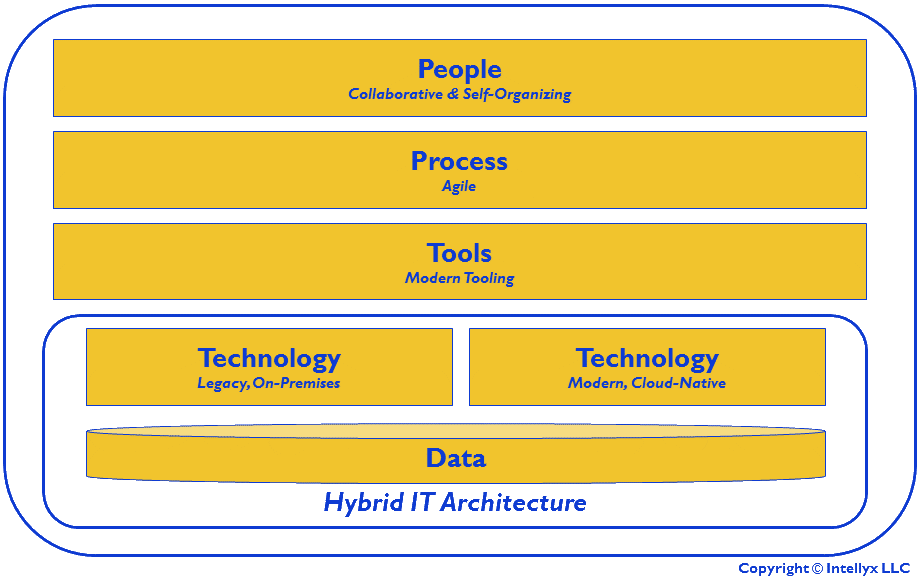As digital transformation efforts drive change across the enterprise, the mainframe team finds itself at an inflection point.
For organizations that have mainframes, these platforms have long been handling the core transaction processing at the heart of their businesses. Today, however, IT leaders face skills retention challenges as mainframe experts rapidly retire.
Furthermore, the business challenges facing mainframe teams today are inevitably centered on strategic digital transformation initiatives. The result: CIOs must make the critical decision regarding the role of the mainframe in their digital efforts.
The challenge today is bringing the mainframe into the modern IT context – modernizing its tooling, interfaces, and people to make the venerable platform an essential enabler of modern digital initiatives.
There are no shortcuts, however. This transformation itself requires new processes, training, as well as tooling – and the changes won’t take place overnight.
Nevertheless, such an investment is absolutely critical, as the mainframe will continue to drive the business. Efficiency, reliability, and stability are the raison d’être of the mainframe, and such capabilities are every bit as important as they have always been – and continued investment in optimizing the mainframe to maintain and improve these capabilities will always be a priority.
How, then, does the organization balance these two priorities? Can an organization continue to enjoy and optimize the core benefits of the mainframe while making it an integral part of the modern IT environment?
Digital Best Practice
The key to understanding how to balance the conflicting priorities impacting the mainframe is to understand that people, processes, and tools must change in order to support a hybrid IT environment that includes mainframes.
For example, in the diagram below, the organization has undergone the necessary transformation of its organization and corresponding processes, leveraging modern, Agile/DevOps techniques to achieve the end-to-end focus on the customer that is at the heart of digital transformation.

In fact, we call the pattern above digital best practice, as it describes how an organization can implement end-to-end transformation while simultaneously maintaining and optimizing legacy assets – including mainframes.
In the figure, the hybrid IT architecture includes both legacy, on-premises technology as well as modern, cloud-native technology. We call this bifurcation of technology the ‘if it ain’t broke, don’t fix it’ principle.
The specifics, of course, depend upon the particular situation at each organization. IT leadership should carefully review both existing technology assets as well as requirements for new technology and implement a hybrid IT architecture that incorporates both types of technology.
Such implementation requires modern tooling – tools that today’s collaborative, self-organizing teams following Agile processes are comfortable using. In the digital scenario above, everyone uses modern tools – even when working with legacy assets: a challenge modern mainframe tooling vendors like CA Technologies are rising to.
Digital best practice also requires a modern, architected approach to corporate data. While mainframes still serve as the enterprise’s central systems of record, there may also be requirements to maintain data in modern, cloud-based systems like Salesforce or ServiceNow.
However, instead of implementing complex integration scenarios that can create obstacles to a modern data strategy, modern digital best practice properly abstracts and virtualizes corporate data across the board.
The Intellyx Take
The diagram above is a simplification, of course – true enterprise environments are by necessity far more complicated.
In particular, digital best practice rarely breaks technology cleanly into two boxes. Far more common is a diversity of different technologies, each with a different strategy regarding modernization or migration.
It is in this real-word context, the ‘if it ain’t broke, don’t fix it’ principle is especially important. Replatforming existing mainframe applications, for example, is almost always inadvisable, as such a move rarely gains any benefit, while losing the bulletproof reliability of the mainframe.
In fact, digital best practice may require the maintenance of legacy, on-premises assets while simultaneously calling for modern, cloud-native technologies.
Organizations should modernize many of their legacy assets like mainframe applications by incorporating them into modern hybrid IT architectures and leveraging modern tooling to continue to update and maintain them, thus enabling them to participate fully in the modern, digital context.
Yes, it’s possible to transform your people and your processes while simultaneously maintaining on-premises legacy assets as part of a coordinated digital transformation strategy.
If you have the right tooling, the right architecture, and you get the data right, you’re well on your way to digital transformation success – while maintaining mainframe assets well into the future.
Copyright © Intellyx LLC. CA Technologies (now Broadcom) and ServiceNow are Intellyx clients. At the time of writing, none of the other organizations mentioned in this article are Intellyx clients. Intellyx retains full editorial control over the content of this paper.



